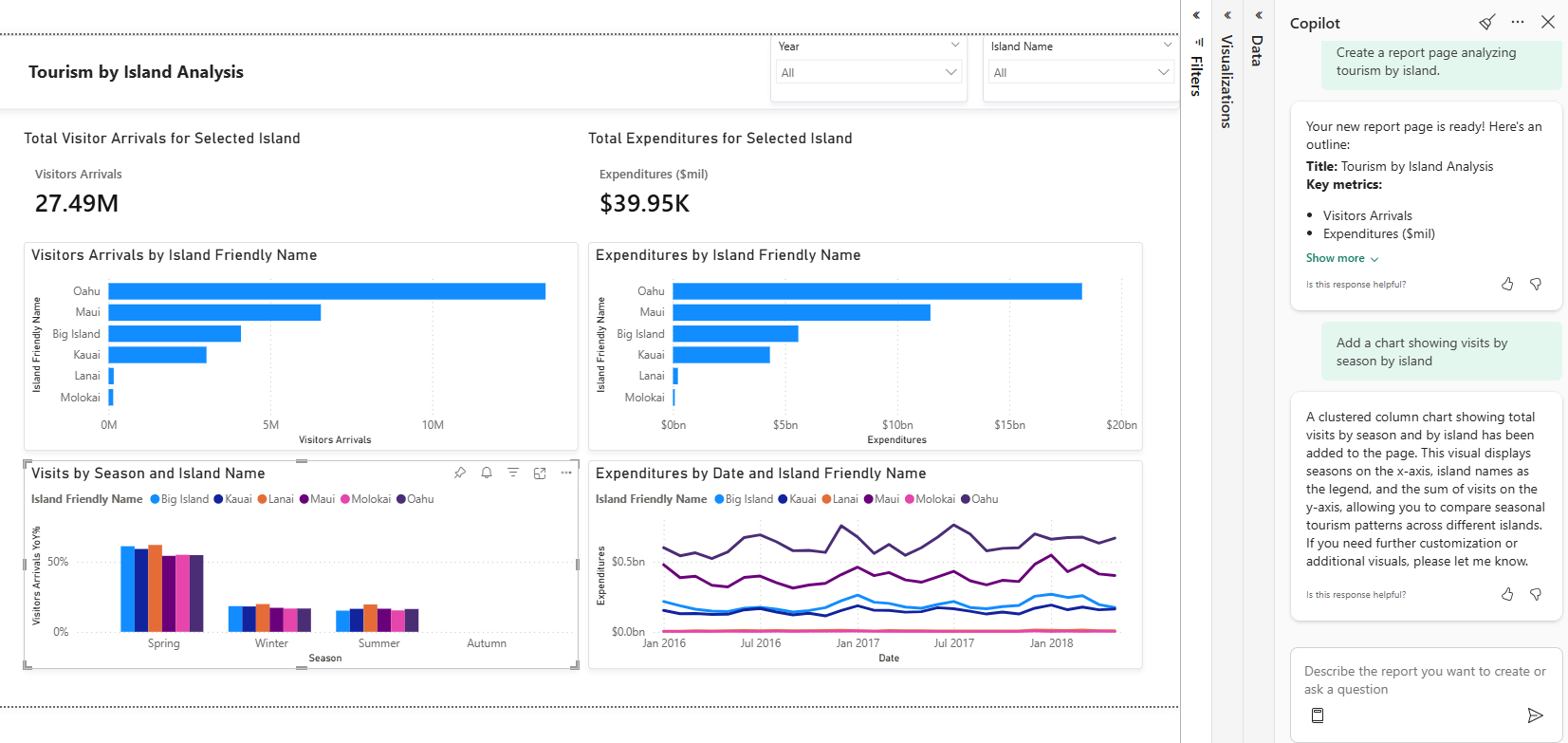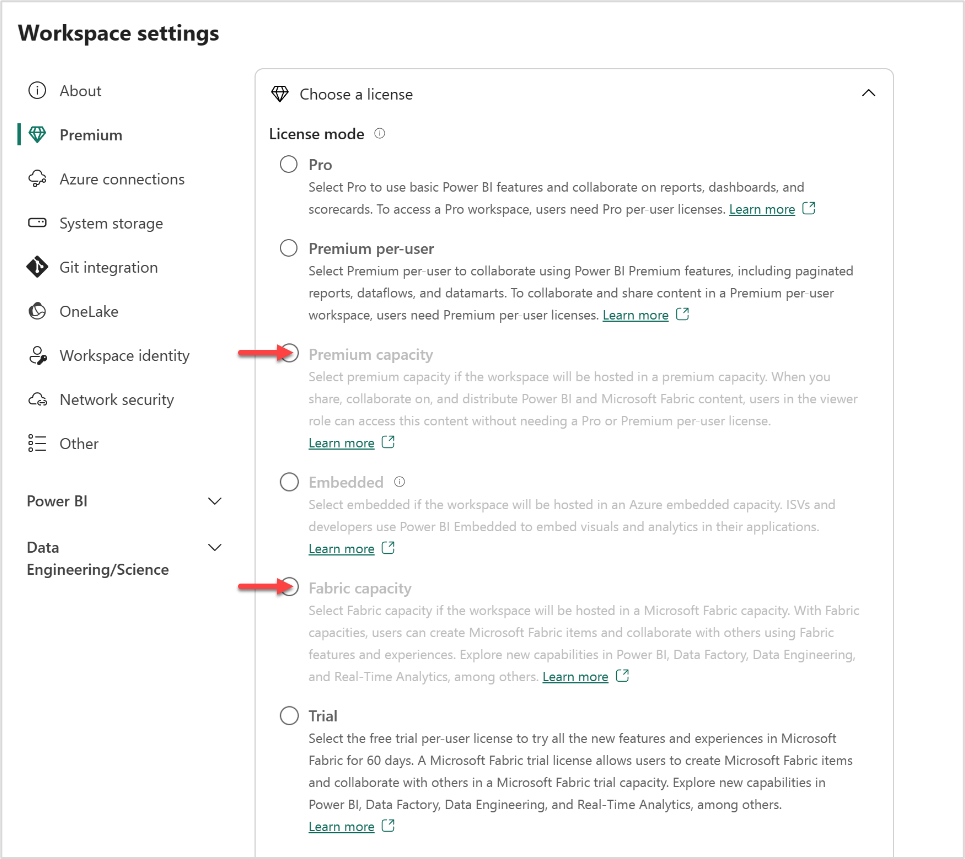Note
Access to this page requires authorization. You can try signing in or changing directories.
Access to this page requires authorization. You can try changing directories.
APPLIES TO:
Power BI Desktop
Power BI service
When you use Copilot for Power BI, you can quickly create and edit report pages using natural language prompts. Copilot can save you hours of effort building and refining your report pages.
You can also create reports with Copilot in Power BI Desktop.
Before you start
Read about all the ways Copilot can help you in the overview of Copilot for Power BI for more guidance before you start.
- You need to select a compatible workspace that you have write access to. It needs to be a workspace that's assigned to a Copilot-enabled capacity, in other words, a paid Fabric capacity or a Power BI Premium capacity (P1 or higher).
Note
Keep the following requirements in mind:
- Your administrator needs to enable Copilot in Microsoft Fabric.
- Your Fabric capacity needs to be in one of the regions listed in this article, Fabric region availability. If it isn't, you can't use Copilot.
- Your administrator needs to enable the tenant switch before you start using Copilot. See the article Copilot tenant settings for details.
- If your tenant or capacity is outside the US or France, Copilot is disabled by default. The one exception is if your Fabric tenant admin enables the Data sent to Azure OpenAI can be processed outside your tenant's geographic region, compliance boundary, or national cloud instance tenant setting. You can find this setting in the Fabric admin portal.
- Copilot in Microsoft Fabric isn't supported on trial SKUs. Only paid SKUs are supported.
- To see the standalone Copilot experience in Power BI, your tenant admin needs to enable the tenant switch.
Use Copilot in the Power BI service for the first time
To use Copilot in the Power BI service, you need to ensure that reports are located in a workspace in the right capacity. The workspace must be in either Premium Power BI (P1 and above) or paid Fabric capacity.
Note
For a refresher on workspace access and permissions, see Roles in workspaces in Power BI.
Check your license type in the Workspace settings.
Select More to navigate to the Workspace settings.
Apply either Premium capacity or Fabric capacity to the workspace and use the X to exit workspace settings.
You can see which license mode is applied to your workspace under Premium. If License modes are grayed out, this workspace doesn't have access to the appropriate capacity.
Now you're ready to create a report with Copilot in the Power BI service.
Get started using Copilot
To see the Copilot button in your report, you first need to select a semantic model.
If this is your first time using Copilot in the Power BI service, see Use Fabric Copilot for Power BI in the service the first time.
Select the Data hub, then select More options (...) for the dataset you want to explore > Create report.
In the ribbon, select the Copilot icon.
Tip
If you don't see Copilot, your admins may not have enabled it in Microsoft Fabric, or you may not have selected a semantic model. Select a semantic model to see it.
In the Copilot pane, you can either select Suggest content for this report to have Copilot evaluate your data and makes suggestions, or enter a prompt directly to describe the report or visuals you want Copilot to create.
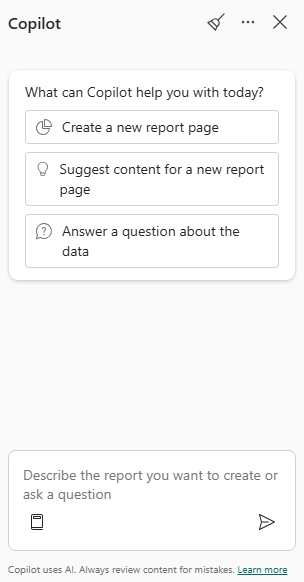
Copilot generates a report page based on your request.
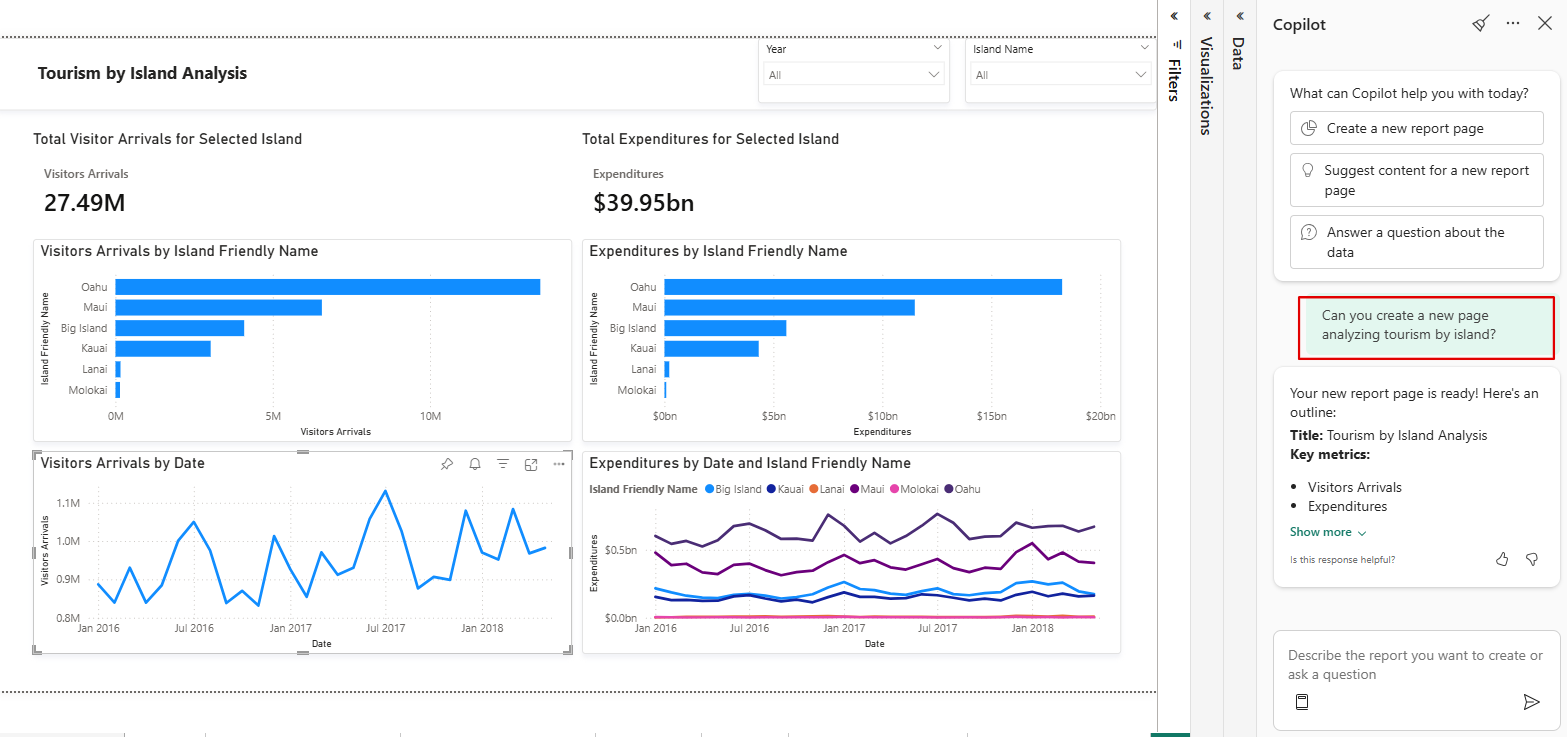
You can further edit the report by prompting Copilot to add, delete, or change visuals.
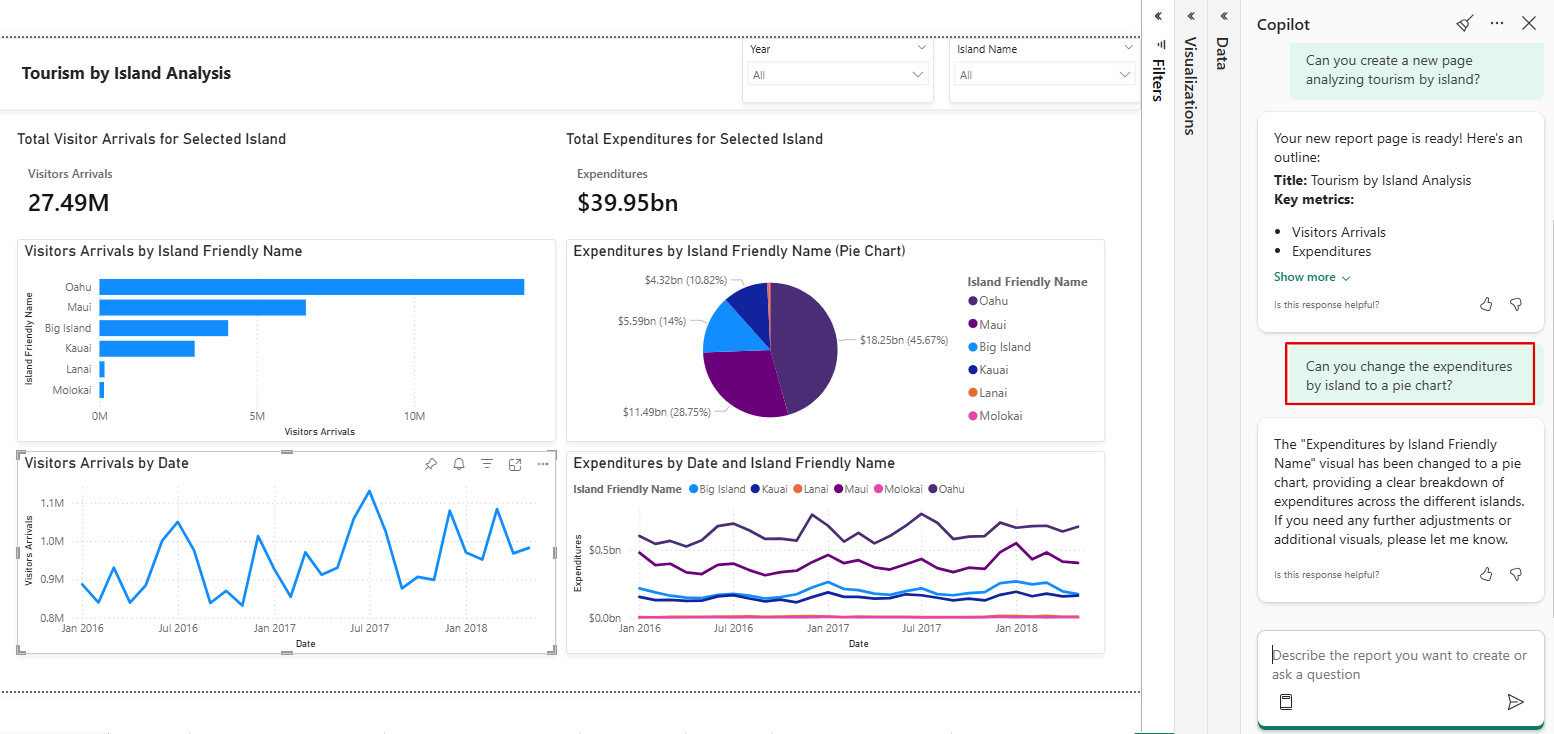
If you need help with writing prompts, see Write Copilot prompts that produce results in Power BI for guidance.
Improved report creation and edits
With updates to report creation in the Power BI service, you can now work with Copilot to both create and edit report pages. These improvements provide more control, flexibility, and visual intelligence when building reports.
Smarter report creation
Copilot now delivers more accurate and relevant visuals, automatically selecting the best way to represent your data. It also supports a wider range of visual types, helping you present insights in the format that best fits your needs.
Flexible editing with Copilot
In addition to creating new pages, you can now:
- Add visuals to existing report pages.
- Change visuals by selecting new visual types or adjusting the fields used.
- Delete visuals that are no longer needed.
- Use undo and redo to easily reverse recent Copilot actions.
Save the report
When you're satisfied with the report, you save the report just like any other report. If you close and reopen the report that Copilot generated in the Power BI service, the report is in Reading view and you don't see Copilot.
- Select Edit to see the Copilot button again.
Considerations and limitations
There are limitations related to creating pages in specific semantic model scenarios.
- Q&A feature switch: The Q&A feature switch for your model must be turned on to use Copilot for report creation and editing.
- Real-Time Streaming Models: Report pages can't be created by Copilot for semantic models utilizing real-time streaming.
- Live Connection to Analysis Services: Semantic models connected live to Analysis Services aren't supported by page creation.
- Semantic models with implicit measures disabled: In scenarios where implicit measures are disabled in your semantic model, Copilot cannot create report pages.
- Custom visuals: Custom visuals aren't currently supported.
- Styling changes: Styling or formatting changes aren't supported through Copilot.
- Complex visuals: Changing complex visuals may result in some loss of detail or formatting.
